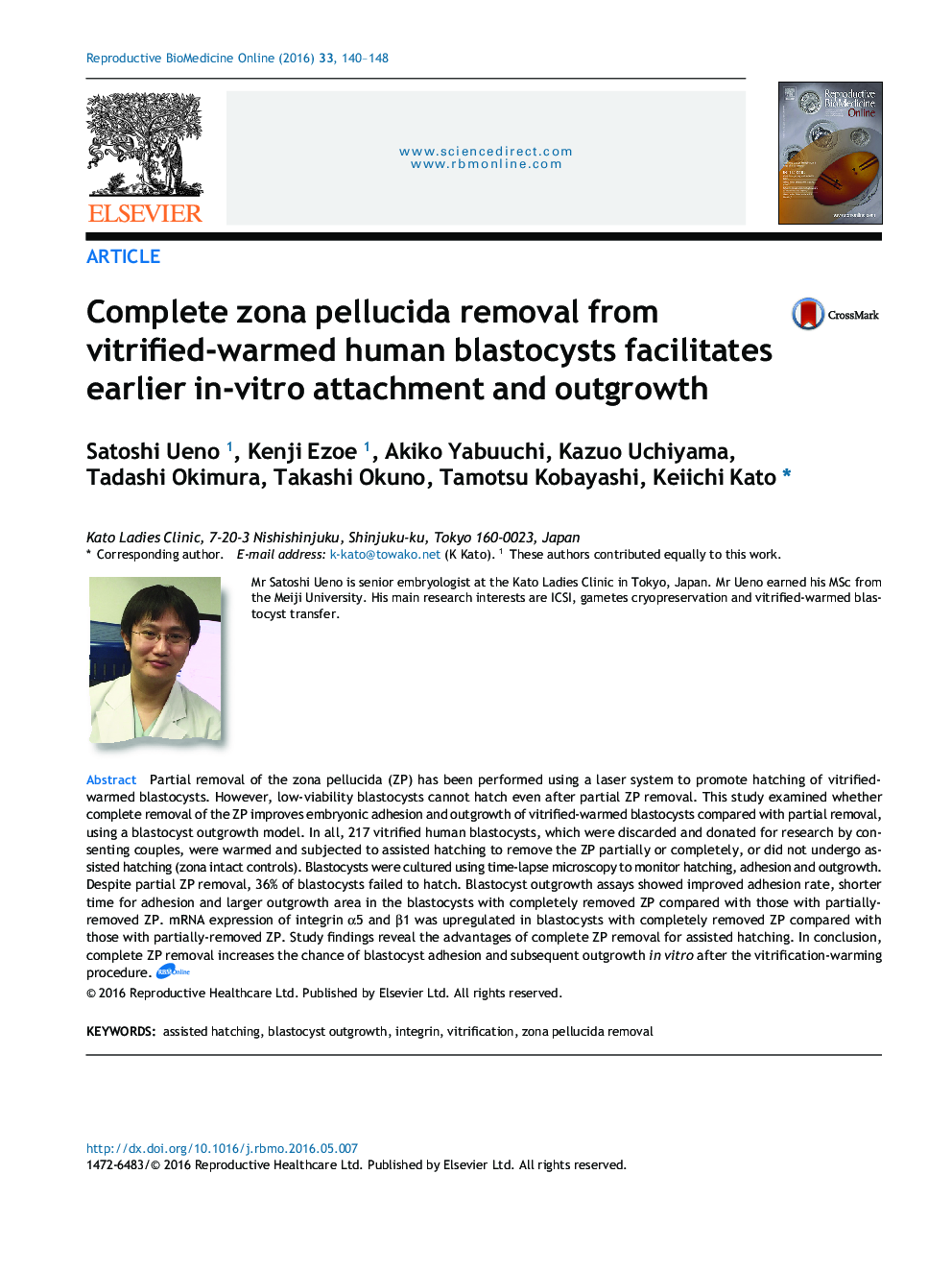| Article ID | Journal | Published Year | Pages | File Type |
|---|---|---|---|---|
| 6188571 | Reproductive BioMedicine Online | 2016 | 9 Pages |
Partial removal of the zona pellucida (ZP) has been performed using a laser system to promote hatching of vitrified-warmed blastocysts. However, low-viability blastocysts cannot hatch even after partial ZP removal. This study examined whether complete removal of the ZP improves embryonic adhesion and outgrowth of vitrified-warmed blastocysts compared with partial removal, using a blastocyst outgrowth model. In all, 217 vitrified human blastocysts, which were discarded and donated for research by consenting couples, were warmed and subjected to assisted hatching to remove the ZP partially or completely, or did not undergo assisted hatching (zona intact controls). Blastocysts were cultured using time-lapse microscopy to monitor hatching, adhesion and outgrowth. Despite partial ZP removal, 36% of blastocysts failed to hatch. Blastocyst outgrowth assays showed improved adhesion rate, shorter time for adhesion and larger outgrowth area in the blastocysts with completely removed ZP compared with those with partially-removed ZP. mRNA expression of integrin α5 and β1 was upregulated in blastocysts with completely removed ZP compared with those with partially-removed ZP. Study findings reveal the advantages of complete ZP removal for assisted hatching. In conclusion, complete ZP removal increases the chance of blastocyst adhesion and subsequent outgrowth in vitro after the vitrification-warming procedure.
